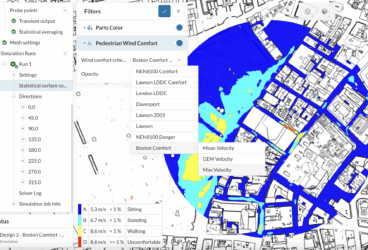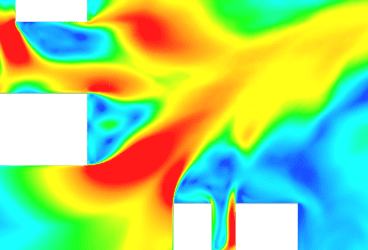With the modern building designs and the complexity of urban areas, the interaction between buildings has become more and more pronounced, sometimes leading to discomfort or safety issues for pedestrians. This is the reason why wind engineering is a very important field in architecture and construction.
This paper addresses the topic of pedestrian wind comfort, from origin and
definition to wind comfort analysis, criteria, and example case studies; all meant to
form an in-depth understanding of the field.
To assess pedestrian wind comfort, two approaches are available for engineers:
- The experimental test—where the engineers build a model and test it using a wind tunnel—can be time-consuming and expensive. If a change is required, the whole geometry has to be redesigned and built from scratch.
- Engineering simulation—particularly computational fluid dynamics (CFD)—where the model is designed using a computer and a simulation software. With engineering simulation (also known as computer-aided engineering), the flow over the model can be modeled using a computer. This approach is faster, more efficient, and more cost-effective, enabling an iterative design process to be done easily.
This free infographic illustrates how engineers can use CFD to virtually test and optimize building designs and HVAC systems. Download it for free.
Wind Comfort Complexity of the Flow in an Urban Area
Pedestrian wind comfort and safety are important requirements in urban areas. Assessing them for new buildings is required to ensure good living conditions. Furthermore, as the flow pattern is influenced by many parameters, including weather temperature, humidity and—most importantly—wind direction, the wind comfort needs to be assessed for many scenarios to ensure safety and comfort in all conditions.
To illustrate this, the following images show the effect of the wind direction on the flow pattern in an urban area. One can clearly see that the wind direction has a significant effect on the wind velocity amplification, and assessing the wind comfort in only one direction can give a wrong prediction of the situation. This is why relying on meteorological data is required to make accurate predictions.
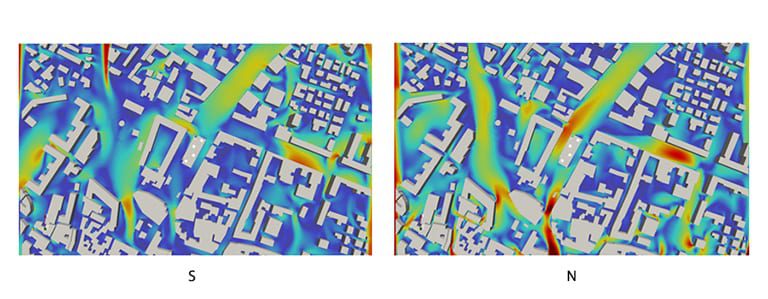
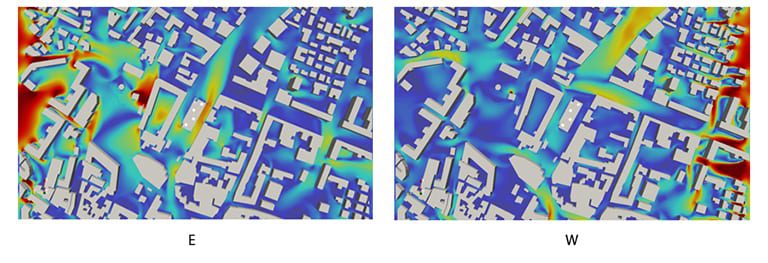
Wind Comfort Design Considerations for Wind Comfort
Buildings’ Corners
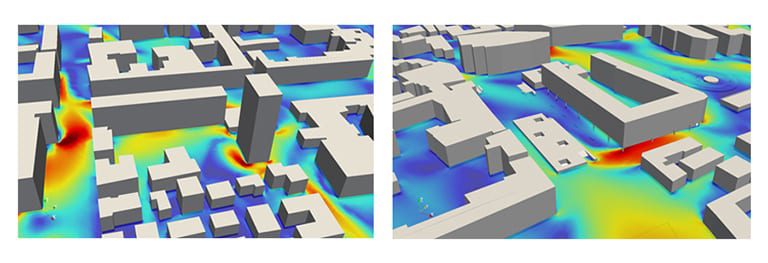
The buildings’ corners are the regions with the most discomfort in an urban area. This is due to the side vortices created from the difference in pressure between the front (with high pressure) and the sides (with low pressure). This is especially valid for high-rise buildings, as can be seen in the following pictures. The red regions represent areas of high-speed flow at the corners of the buildings. It is recommended to avoid placing any gardens, restaurant terraces or public spaces close to these regions because of the discomfort and even the safety issues.
Venturi Effect
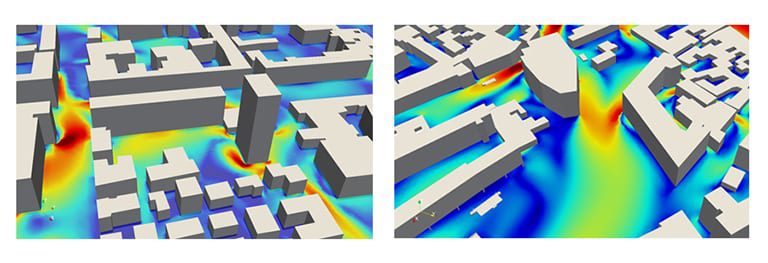

The Venturi effect is the reduction in the wind pressure that results when a wind flows through a constricted section. This reduction in pressure creates an acceleration of the wind in the constricted field.
The Venturi effect is very common in urban areas when the air flows over a large area and two buildings constrict the flow cross-section. This constriction creates a significant amplification of the velocity between the two buildings and a discomfort region that can also become unsafe for pedestrians.
Passages
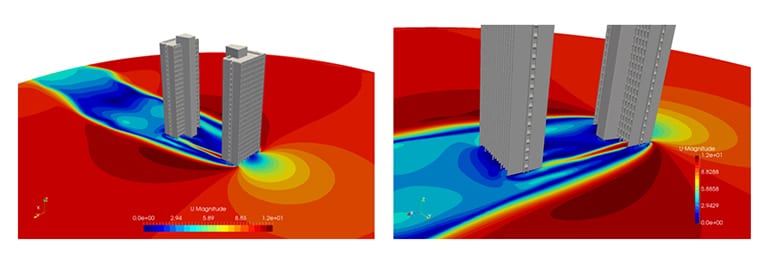
Passages are another important detail to consider when you design a new building. Passages can create a high amplification factor and a strong wind jet that is unsafe for pedestrians. This high-velocity jet forms when the flow with high pressure from the stagnation side tries to escape through the passage.
Wind Comfort Conclusion
Wind can have a significant effect on pedestrians’ comfort and safety. This is the reason why it is important to assess the comfort in the urban areas before developing any building, to ensure good living conditions and safe streets. A high-quality simulation tool—such as the SimScale cloud-based platform—is extremely valuable to assess the wind comfort by all engineers working in wind engineering and pedestrian wind comfort applications.
If you are interested in performing your own pedestrian wind comfort analysis, I strongly recommend you to try SimScale for CFD.
In addition, this free webinar recording can help you learn how to use cloud-based CFD to predict wind loads on buildings.



